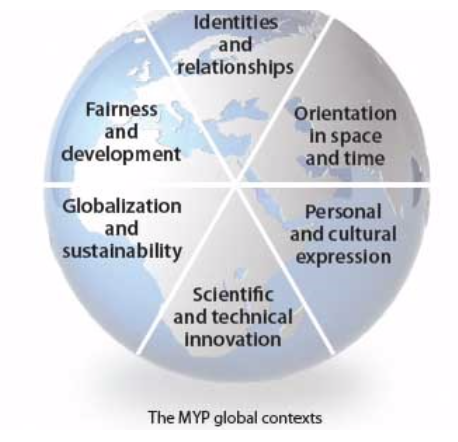Subject content is organised around themes or perspectives called Global Contexts. They are designed to encourage the students to make worthwhile connections between the real world and classroom learning. Teaching and learning in the MYP involves understanding concepts in context. Global contexts provide a common language for powerful contextual learning, identifying specific settings, events or circumstances that provide more concrete perspectives for teaching and learning. When teachers select a global context for learning, they are answering the following questions.
Why are we engaged in this inquiry?
Why are these concepts important?
Why is it important for me to understand?
Why do people care about this topic?
The six MYP Global Contexts explorations of our common humanity and shared guardianship of the planet. They invite reflection on local, national and global communities, as well as the real-life issues and concerns of 11 to 16-year-old students. For each MYP unit, teachers should identify one global context that establishes a focus for meaningful teaching and learning in a program of international education. Over the course of their study, students should encounter all six global contexts.
MYP global contexts provide common points of entry for inquiries into what it means to be internationally minded, framing a curriculum that promotes multilingualism, intercultural understanding and global engagement. These contexts build on the powerful themes of global significance that structure teaching and learning in the Primary Years Programme creating relevance for adolescent learners.
Inquiring into subject content through a global context enables students to develop a deeper understanding of both the subject and its application in the real world. Repeated cycles of inquiry, action and reflection can lead students from academic knowledge towards practical understanding, developing positive attitudes towards learning as well as a sense of personal and social responsibility.

